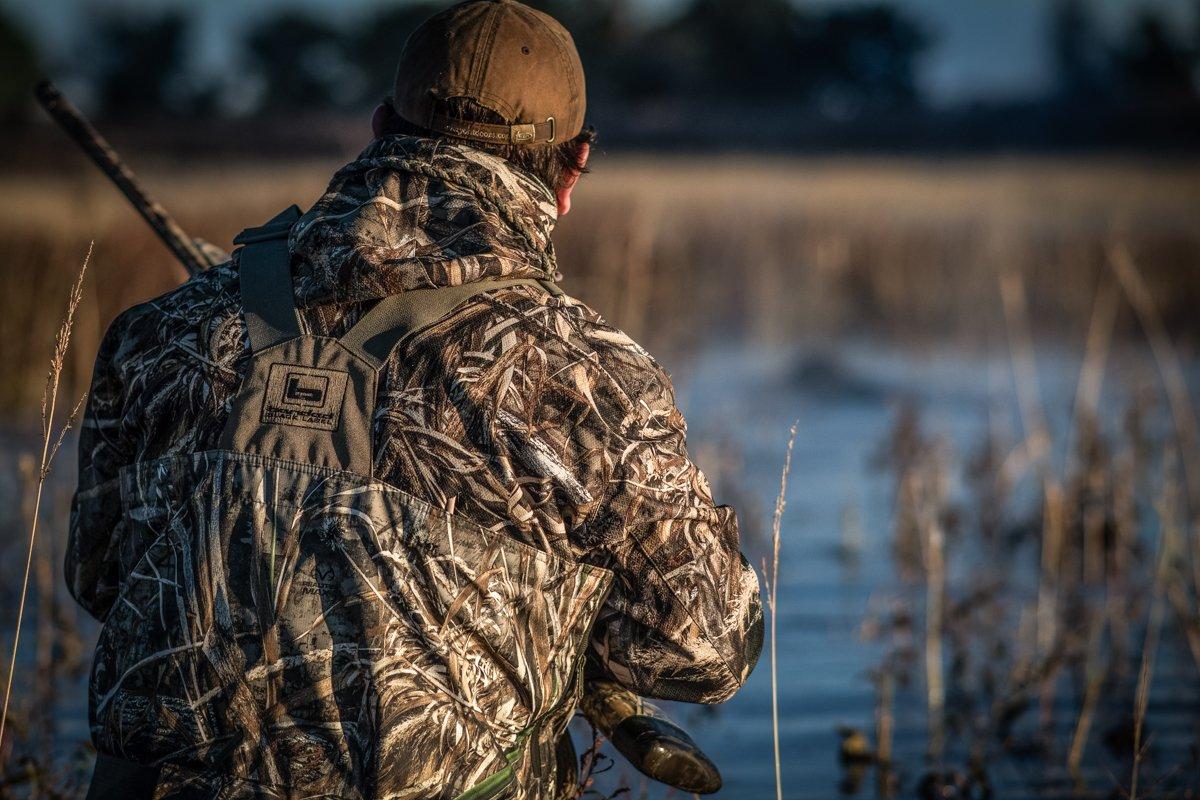The simplest style of waterfowling can still be made better with a few advanced tactics
Jump-shooting might be the simplest form of duck hunting. You walk or paddle down a stream or sneak up on a pothole. When surprised ducks flush, you shoot them (or at them).
But as with any hunting method, some special tactics can improve your success rate. Try these sneaky tricks when flushing birds this fall.
Hunt Bank to Bank
Sometimes, because of property lines or shoreline cover, you must confine your jump-shooting forays to a stream or river, walking downstream or slipping along in a skiff or canoe. When the situation allows, though, you can greatly improve your odds by walking the shoreline. This is especially true where streams or creeks wind and bend back and forth, as you can creep silently across land and sneak up on ducks loafing along outside bends or cover-laden flats.
Scan aerial maps to locate likely spots. Then, plan your approach, and walk quietly from bend to bend. This eliminates lots of unproductive water and helps you avoid being busted while tromping through long, straight stretches of water.
Make Your Boat Silent
Small watercrafts are ideal for jump-shooting, as they can navigate cover-choked areas and let you drift within easy range of unsuspecting birds. Hunters sometimes negate this advantage by banging paddles against their skiffs, dropping shells into the bottom of aluminum canoes and making other unnecessary noise. Keep your craft silent. Use your paddle more as a rudder than as propulsion, and strive to keep it away from the hull. Also, lay some cheap carpet on the bottom of your boat to muffle foot shuffling or noisy gear.
Hunt Into the Wind
Jump-shooting small ponds or sloughs can be ridiculously easy, especially if you approach from behind cover or terrain. However, many hunters forget another tactical advantage: Sneaking into the wind covers much of the noise you make during your approach. This is especially helpful if you must navigate through crunchy cattails or boot-sucking muck as you near the pothole.
A windward approach works best for small sloughs, too. Birds will likely congregate along lee shores during stiff winds, but a silent sneak will put you within easy range when you spring the trap.
Jump and Wait
Pothole hunters love to flush ducks off small waters and then wait for them to return. Why don't we do this more often on streams and rivers? Sometimes, when you flush a group of woodies or other ducks from a deep bend or brush-choked shoreline, it pays to find a good setup and wait there for a half-hour or so. If the birds weren't too spooked, they might return, especially if that area has lots of acorns or other duck food. Some days, I'll stop several times during a float or walk when I flush ducks from good-looking areas. Birds won't always come back, but they do it often enough to make the strategy worthwhile.
Walk or Float
Get out for a walk or paddle this season, especially when ducks are stale and decoy hunting is slow. Remember these sneaky tactics as you spring the trap. They might ensure that your journey features a heavy strap.
Click here for more Realtree waterfowl hunting content. And check us out on Facebook.








